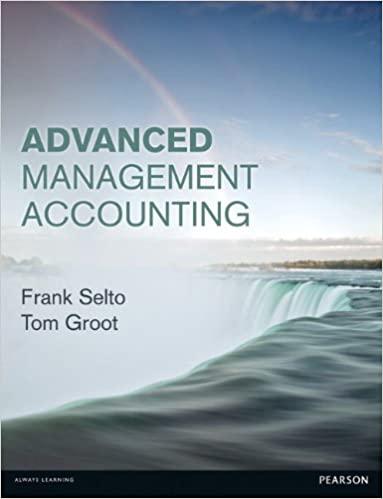Blue Note pharmaceutical ingredients Blue Note produces three different ingredients for the pharmaceutical industry. In order to
Question:
Blue Note pharmaceutical ingredients Blue Note produces three different ingredients for the pharmaceutical industry. In order to produce them, the company uses three departments, each one responsible for a specific production process.
● Chemical A is processed through Department 1 in batches of 100 litres. Each batch processed by Department 1 produces 70 litres of chemical B and 30 litres of chemical C. Processing costs per batch in Department 1 is €650.
● Chemical B is sold for €10 per litre. Chemical C is further processed by Department 2 to produce chemicals D and E. Department 2 processes chemical C in batches of 200 litres and total processing costs of Department 2 is €900 per batch. Each batch processed generates 100 litres of chemical D and 40 litres of chemical E.
● Chemical D is sold for €12 per litre. Chemical E can be further processed in Department 3 at a cost of €200 per batch. Chemical E is a hazardous product. Eventual surpluses of chemical E need to be disposed at a cost of €6 per litre.
● Department 3 processes chemical E in batches of 40 litres. Each batch produces 30 litres of chemical F, which is sold for €14. A complete overview of the production process is displayed in the figure:

The sales department indicates that sales of chemical B cannot exceed 35 000 litres in the coming period, the maximum demand for chemical D is estimated at 10 000 litres, and demand for chemical F is estimated at 15 000 litres maximum. Production capacity is limited in Departments 1, 2 and 3 to 600, 80 and 40 batches respectively.
Required:
1. Formulate an LP to determine the optimal production plan at Blue Note for the upcoming period.
2. Using Excel, solve the LP formulated in requirement 1 to determine the optimal plan (disable the ‘assume linearity’ option).
3. Which restriction should be relaxed first in order to increase profitability?
Step by Step Answer:






